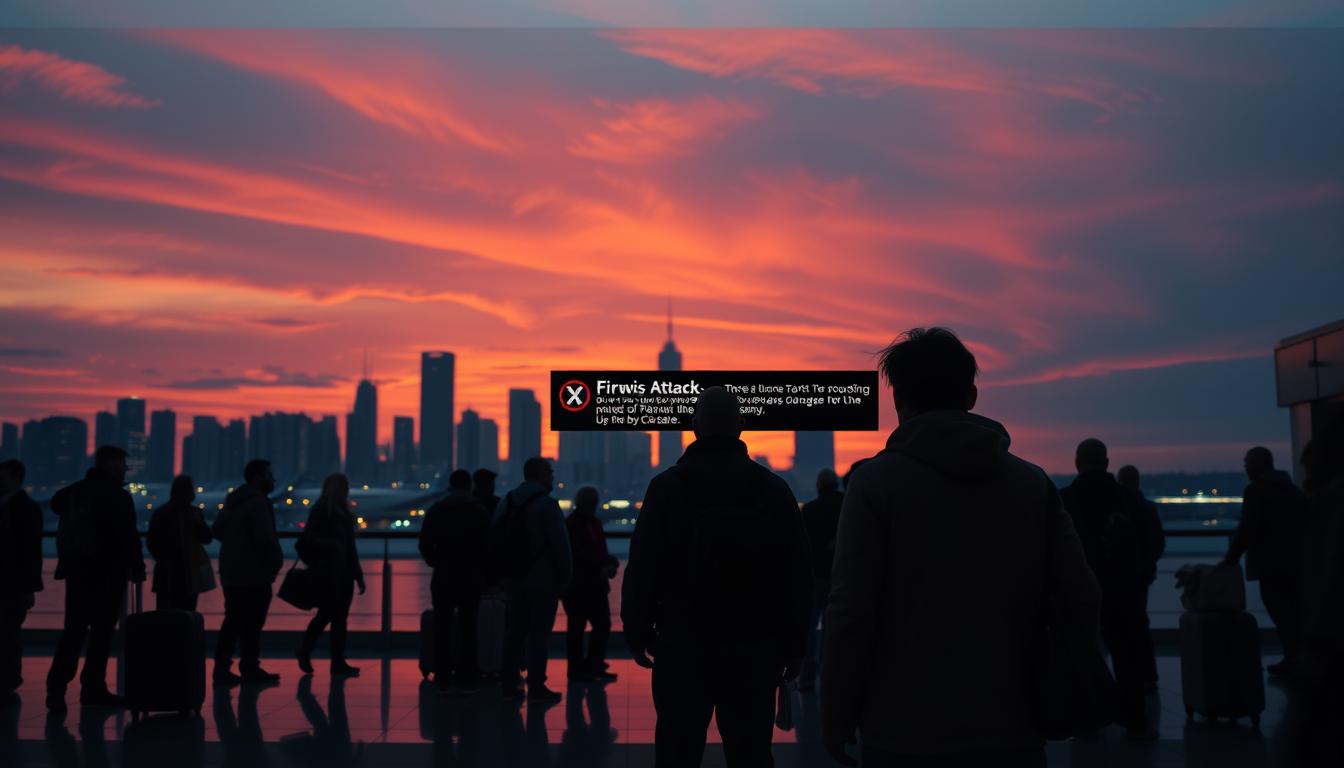Can one unexpected headline upend your carefully made trip — and what can you do to protect your plans?
You’re here for clear answers: we explain how terrorism coverage works inside a policy, what is commonly included, and when CFAR or political evacuation benefits matter.
Governments issue advisories and the U.S. STEP program helps with alerts and emergency contact. That context can affect a claim, so timing your purchase and reading policy wording matters.
We’ll show real examples like Atlas Travel and IMG Patriot Platinum, highlight key limits, and give simple safety tips you can use on the road. By the end, you’ll know the practical way to plan ahead without giving up adventure.
Understanding today’s terrorism risk landscape for U.S. travelers
Today’s risk picture is less about large plots and more about sudden, localized incidents in public places. Tactics have shifted toward vehicle rammings and lone-actor stabbings, often in well-known cities such as Paris, London, and Brussels.
How threats have evolved and what that means for trip planning
Plan with flexibility. Localized attacks can happen without warning, so keep time buffers and refundable bookings when possible. Check U.S. Department of State advisories and health notices from the CDC or WHO before you go.
High-level safety takeaways before you buy coverage
- Enroll in STEP to get embassy alerts and faster outreach in an emergency.
- Choose a policy that responds to officially declared events and offers strong emergency benefits for major cities or high-profile events.
- Build safety into your route: avoid high-risk areas during peak hours and stay near secured hotels and transit hubs.
- Keep offline copies of documents and note alternate exits and rendezvous points in busy venues.
What “terrorism” means in travel insurance policies
Not all violent acts are equal in a policy’s eyes — labels and location matter more than you might expect. Start by reading the definition section. Insurers often require an official declaration before an incident qualifies as a terrorism event.
Insurer definitions vs. civil unrest and acts of war
Insurers define terrorism narrowly. Many exclude riots, protests, and acts of war even when they look similar. That means a protest that turns violent may not trigger benefits.
City-based triggers and distance thresholds
Coverage often depends on where the event happens. Many plans use city-based triggers—only incidents in your booked city or within a set radius (commonly 30–50 miles) qualify.
- Known-event rules can block claims if the incident occurred before purchase.
- Government advisories can change eligibility at purchase time.
- Some policies require service disruption—like airport closures—to activate benefits.
If anything seems unclear, call the insurer and ask them to point to the exact policy language and conditions. That small step can save confusion later and help you choose the right travel insurance for your trip.
Does travel insurance cover terrorism
When a violent incident hits a city on your itinerary, your plan’s wording decides benefits. Read definitions and distance triggers first. Many policies ask that the event happens in the booked city or within 30–50 miles.
When trip cancellation or interruption is typically covered
Trip cancellation or interruption often applies if a recognized terrorist event occurs before departure or during your trip and matches the policy’s city or time window. Some plans also require airline service to stop for 24+ hours to validate certain claims.
When emergency medical and evacuation benefits apply
Emergency benefits usually pay for medical expenses from a terrorist attack—hospital care, physician fees, and ambulance transport—up to plan limits. Evacuation and political evacuation kick in when local safety worsens or when a U.S. warning is issued while you’re abroad.
Provider examples
- Atlas Travel: medical up to $50,000 (if no advisory) and political evacuation to $100,000 when a U.S. warning is issued during the trip.
- IMG Patriot Platinum: terrorism medical to $50,000; evacuation and repatriation to $100,000 with prior approval; optional trip cancellation/interruption rider for U.S. residents.
- Aegis Go Ready Choice & VIP: include terrorism-related trip cancellation, emergency medical, evacuation, and repatriation; VIP raises limits and support.
| Plan | Medical Limits | Evacuation / Political Evac | Trip Cancellation Options |
|---|---|---|---|
| Atlas Travel | $50,000 | $100,000 when U.S. warning issued | Standard, subject to city/distance triggers |
| IMG Patriot Platinum | $50,000 | $100,000 with prior approval | Optional rider for trip cancellation/interruption |
| Aegis Go Ready (VIP) | Higher VIP limits | Evacuation and repatriation included | Includes terrorism-related cancellation & interruption |
Common exclusions and limitations you must check
A policy can look strong on paper but still leave gaps when a publicized incident changes terms. Read exclusions and timing rules before you buy. That first step keeps surprises to a minimum.
Known events and purchase timing
Many plans exclude claims tied to widely reported events if you buy afterward. If an attack makes headlines, a missed purchase window can block a trip cancellation claim.
Advisories, high-risk areas, and airline rules
Government warnings often reshape eligibility. Some destinations face outright exclusion or extra underwriting.
Airlines may reroute or cancel flights, but many policies require a 24+ hour service suspension before you can claim for trip interruption.
Civil unrest, war distinctions, and documentation
Insurers usually treat riots and political unrest differently from declared terrorism, and acts of war are commonly excluded. Distance triggers and whether related attacks count as one event also matter.
- Keep official advisories, airline notices, and receipts.
- Ask about upgrades that fill gaps and get written confirmation of key conditions.
How to choose and time your policy for maximum protection
B. A smart purchase window protects prepaid plans and gives you options if conditions shift.
Buy early. Many benefits only activate if you purchase within a set window after your first trip payment. That timing shields prepaid expenses from later events that insurers label as “known.”
Watch look-back periods. Insurers can review events before purchase to decide if a claim is valid. If a situation was public before you bought a plan, you may lose trip cancellation interruption rights.
When CFAR makes sense
CFAR gives flexibility when uncertainty is high. It usually reimburses about 50–75% of prepaid costs if you cancel at least 48 hours before departure.
- Buy CFAR within the plan’s advance-purchase window—often soon after your first payment.
- Expect partial reimbursement and strict rules on qualifying expenses.
- Layer carefully: if you add CFAR to a primary plan, confirm how benefits coordinate.
- Verify whether plans require specific airline hours of suspension or other triggers to activate certain benefits.
Match the plan to your route. Multi-city trips and events need broader definitions and higher emergency limits. Compare plans side-by-side and get critical terms in writing so you know exactly what your travel insurance cover includes before you commit.
Pre-trip safety prep: advisories, enrollment, and on-the-ground habits
Before you leave home, a few simple checks can make the difference between a smooth trip and a stressful scramble. Start with official guidance and basic readiness so you can enjoy your plans with confidence.
Check advisories and enroll in STEP
Check U.S. Department of State and CDC advisories before booking and again 24–48 hours before departure. These notices give destination-specific risk and health guidance you can act on.
Enroll in the STEP program so the embassy can alert you fast. Save the U.S. State Department 24/7 phone: 888.407.4747 in your contacts.
Share plans and set meeting points
Share your itinerary with a trusted contact. Pick a primary and backup meeting point in each city. Save hotel and embassy details on your phone for quick access.
Practical on-the-ground practices
- Move through busy transit areas promptly and watch for suspicious items.
- Stay low-profile near crowded sites and know the nearest exits.
- Use licensed taxis or verified rideshares and note the plate and driver ID.
- Prepare a small go-bag with ID, policy numbers, cash, meds, and chargers.
Quick tip: Store your insurer’s 24/7 assistance number and practice calm situational awareness—these smart habits protect your safety and help any emergency services respond faster.
What to do during and immediately after a terrorist event
If the unthinkable happens while you’re away, clear steps make the difference between chaos and control. Start by protecting yourself and anyone nearby. Act fast, stay aware, and follow local official guidance when it arrives.
Run, Hide, Fight: immediate safety actions
Move quickly away from danger if a safe path exists. If you cannot escape, hide—lock or barricade doors, silence phones, and stay low.
Fight only as a last resort if your life is at risk. These actions save lives in a fast-moving terrorist attack.
Contacting local authorities, embassies, and 24/7 assistance
Call local emergency numbers first. If emergency services are down, contact your embassy or consulate for help and coordination.
U.S. citizens can reach the State Department at 888.407.4747, available 24/7. Also call your insurer’s assistance line—your company can point to nearby medical services and approved facilities.
Medical care, political evacuation, and repatriation coordination
For serious injuries, get to the nearest hospital and ask staff to contact your insurer for pre-approval if required. If the situation becomes a broader crisis, your plan may trigger political evacuation or repatriation under policy terms.
Mental health support and notifying loved ones
After immediate danger passes, document time, place, and instructions. Use Safety Check tools or messages to mark yourself safe and reduce panic.
Accept mental health support—your insurer or local services can connect you with crisis counseling. Keep receipts and medical notes for any future claim or case review.
Making a claim: documentation, timelines, and who to call
If you face an unexpected event abroad, how and when you report it shapes the outcome of any claim. Start with one phone call to the company’s 24/7 assistance line. Note the time, make, and the representative’s name and claim number in your account log.

Proof you’ll likely need
Insurers expect official documents. Gather U.S. State Department advisories, local police or incident reports, and any airline notices that show service interruptions.
Keep itemized medical records and bills for every expense. Save receipts for prepaid items—tickets, hotels, tours—and any refund denials from suppliers.
Working with emergency assistance and claims teams
Call emergency assistance immediately if the plan requires prior approval for evacuation or high-cost care. Ask for an authorization number and written confirmation.
- Start your claim fast: record times, contact names, and the claim number in your account.
- Save proof: advisories, police reports, medical notes, and itemized expenses.
- Document trip losses: supplier invoices, cancellation penalties, and airline suspension notices.
- Keep communication logs: emails, chats, and call records help clarify instructions later.
| What to send | Why it matters | Typical deadline |
|---|---|---|
| Government advisories | Proves timing and official risk level | Within 30 days of filing |
| Police/incident reports | Validates the event and local response | As soon as available |
| Medical records & itemized bills | Supports expense reimbursement | Submit with initial claim or per company request |
| Prepaid receipts & refund denials | Shows non-refundable losses for trip claims | Within the policy’s stated time window |
Final tip: track your claim status online, reply quickly to requests, and politely escalate if time-sensitive approvals lag. Clear records and steady contact help resolve most situations faster so you can focus on recovery and next steps.
Conclusion
In short, the right plan lets you keep exploring while handling sudden events calmly.
Pick policies with clear definitions, solid emergency services, and practical limits for evacuation and medical expenses. CFAR can refund 50–75% of prepaid costs if you cancel at least 48 hours before departure and bought it in the plan window.
Compare proven options — Atlas Travel, IMG Patriot Platinum, and Aegis Go Ready — and confirm city-based triggers (commonly 30–50 miles) and trip cancellation or trip cancellation interruption rules in writing.
Enroll in STEP, store 888.407.4747, and keep advisories, receipts, and medical notes handy. Travel boldly but prepared: shortlist plans, lock in coverage, and pack essentials so you can pivot if a terrorist attack occurs near your route.


